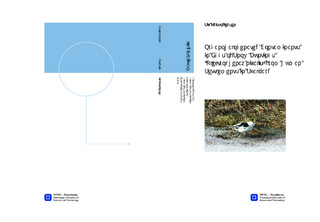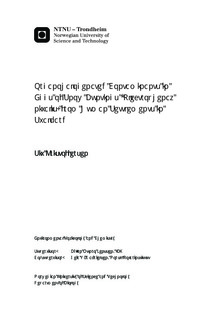| dc.description.abstract | Contaminants in the Arctic environment are mainly transported from lower latitude areas by atmospheric transport. However, the Russian settlements (Barentsburg and Pyramiden) in Svalbard have shown to be heavily influenced by local pollution of polychlorinated biphenyls (PCB), as high concentrations have been found in vegetation, soil and sediments. The Norwegian settlements (Longyearbyen and Ny-Ålesund) are to a lesser extent influenced by local pollution of PCB. Birds have been utilized as sentinels for environmental pollution in several studies, as the use of bird-eggs is considered as a non-invasive method. The aim of this study was to investigate whether the snow bunting (Plectrophenax nivalis) is influenced by local pollution of PCB in the Russian settlements. During the 2010 field season and the 2011 field season, 32 eggs of snow buntings were collected in Longyearbyen (n=8), Ny-Ålesund (n=8), Barentsburg (n=9) and Pyramiden (n=7). The analysis was conducted at the Norwegian Institute of Air Research (NILU) in Tromsø. The eggs were analyzed for PCBs, organochlorinated pesticides (OCPs), brominated diphenyl ethers (PBDE) and perfluoroalkylated compounds (PFASs). The results showed that PCBs were the most abundant contaminant group in the Russian settlements, while PFASs was the most abundant contaminant group in the Norwegian settlements. Significant higher concentrations (ng/g wet weigth) of ∑7PCB (sum of the seven most common PCBs) were found in the eggs from the Russian settlements (Barentsburg and Pyramiden) than in the eggs from the Norwegian (Longyearbyen and Ny-Ålesund). Further on, the PCB congener composition in the eggs was comparable with the technical PCB-mixtures previous used in the Russian settlements. The results thus indicate influence of local pollution of PCB in eggs of snow buntings in the Russian settlements. Further on, local influence of dichlorodiphenyldichloroethylene (p,p -DDE) and PFASs cannot be excluded. However, the contaminant burden of hexachlorobenzen (HCB), trans-nonachlor, p,p -DDE and PFASs in the eggs of snow buntings in Svalbard are mainly explained by; I: atmospheric transport of contaminants to the Arctic environment, II: transport of contaminants by sea birds, III: exposure during migration, IV: exposure in overwintering areas. The concentration of organohalogenated compounds (OHCs) in eggs of snow buntings in this study is considerable lower than concentrations in previously studies that have reported to cause adverse effect in other bird species. Further are the concentrations of OHCs in this study in general lower when compared with other studies on Svalbard seabirds. However, it should be noted that the concentration of ∑PCB in eggs of snow buntings is comparable with previous studies on Svalbard seabirds. The results in this study indicate that the snow bunting may be utilized as a sentinel of local pollution in Svalbard in the future. | nb_NO |

